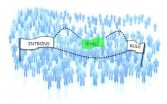(Press-News.org) CHAPEL HILL, N.C. – Research findings from the University of North Carolina School of Medicine are shining a light on an important regulatory role performed by the so-called dark matter, or "junk DNA," within each of our genes.
The new study reveals snippets of information contained in dark matter that can alter the way a gene is assembled.
"These small sequences of genetic information tell the gene how to splice, either by enhancing the splicing process or inhibiting it. The research opens the door for studying the dark matter of genes. And it helps us further understand how mutations or polymorphisms affect the functions of any gene," said study senior author, Zefeng Wang, PhD, assistant professor of pharmacology in the UNC School of Medicine and a member of UNC Lineberger Comprehensive Cancer Center.
The study is described in a report published in the January 2013 issue of the journal Nature Structural & Molecular Biology.
The findings may be viewed in terms of the film industry's editorial process where snippets of celluloid are spliced, while others end up unused on the proverbial cutting room floor.
Taken from a DNA point of view, not every piece of it in each human gene encodes for a functional protein; only about 10 percent does, in coding regions called "exons." The other 90 percent of the stuff that fills the intervening regions are longer stretches of dark matter known as "introns."
But something mysterious happens to introns during the final processing of messenger RNA (mRNA), the genetic blueprint that's sent from the cell's nucleus to its protein factory. Only particular exons may be included within the final mRNA produced from that gene, whereas the introns are cut out and destroyed.
It's therefore easier to understand why more scientific attention has been given to exons. "When people are looking at the genetics of a disease, most of the time they're looking for the change in the coding sequence," Wang said. "But 90 percent of the sequence is hidden in the gene's introns. So when you study gene variants or polymorphisms that cause human disease, you can only explain the part that's in the exon. Yet the majority remains unexplainable because they're in the introns."
Following completion of the genome sequencing projects, subsequent DNA and RNA sequencing revealed the existence of more than one splice variant, or isoform, for 90 percent of human genes. During messenger RNA processing, most human genes are directed to be cut and pasted into different functional isoforms.
In a process called alternative splicing, a single gene could code for multiple proteins with different biological functions. In this way, alternative splicing allows the human genome to direct the synthesis of many more proteins than would be expected from its 20,000 protein-coding genes.
"And those different versions sometimes function differently or in opposite ways," Wang said. "This is a tightly regulated process, and a great number of human diseases are caused by the 'misregulation' of splicing in which the gene was not cut and pasted correctly."
Wang's research colleagues identified "intronic splicing regulatory elements." These essentially recruit protein factors that can either enhance or inhibit the splicing process.
Their discovery was accomplished by inserting an intron into a green fluorescent protein (GFP) "reporter" gene. These introns of the reporter gene carried random DNA sequences. When the reporter is screened and shows green it means that portion of the intron is spliced.
"The default is dark," so any splicing enhancer or silencer can turn it green," Wang explains. "In this unbiased way we can recover hundreds of sequences of inhibited or enhanced splicing."
The study collaborators put together a library of cells that contain the GFP reporter with the random sequence inserted. Thus, when researchers looking at the intron try to determine what a particular snippet of genetic information does and its effect on gene function, they can refer to the splicing regulatory library of enhancers or silencers.
"So it turns out that the sequencing element in both exons and introns can regulate the splicing process, Wang says. "We call it the splicing code, which is the information that tells the cell to splice one way or the other. And now we can look at these variant DNA sequences in the intron to see if they really affect splicing, or change the coding pattern of the exon and, as a result, protein function."
INFORMATION:
Collaborators in this study with Zefeng Wang are Yang Wang in the department of pharmacology and member of the UNC Lineberger Comprehensive Cancer Center; Meng Ma, Anhui University, Hefei, China; and Xinshu Xiao, University of California, Los Angeles.
Support for the research comes from the American Heart Association and the National Cancer Institute, a component of the National Institutes of Health.
Dark matter made visible before the final cut
2013-01-07
ELSE PRESS RELEASES FROM THIS DATE:
Italian immigrants live longer
2013-01-07
Although immigrants from Italy and their offspring form one of the largest demographic groups in Switzerland, there are hardly any studies on their state of health and risk of mortality. In a first for Switzerland, Silvan Tarnutzer and Matthias Bopp from the University of Zurich's Institute of Social and Preventative Medicine calculated unbiased mortality risks for people with an Italian migrant background.
Immigrants from Italy live longer than Swiss people
Compared to Swiss people born in Switzerland, immigrant Italians exhibit a mortality risk that is roughly ten ...
Sublingual immunotherapy shows promise as treatment for peanut allergy
2013-01-07
CHAPEL HILL, N.C. – Peanuts are one of the most common triggers of severe food-induced allergic reactions, which can be fatal, and the prevalence of peanut allergy is increasing. However, there is currently no clinical treatment available for peanut allergy other than strict dietary elimination and, in cases of accidental ingestion, injections of epinephrine.
But a new multicenter clinical trial shows promise for sublingual immunotherapy (SLIT), a treatment in which patients are given daily doses, in gradually increasing amounts, of a liquid containing peanut powder. ...
Protein production: Going viral
2013-01-07
VIDEO:
The human TFIID core complex contains two copies each of TAF4 (green), TAF5 (red), TAF6 (blue), TAF9 (light blue) and TAF12 (light green). The density determined by cryo-electron microscopy is...
Click here for more information.
A research team of scientists from EMBL Grenoble and the IGBMC in Strasbourg, France, have, for the first time, described in molecular detail the architecture of the central scaffold of TFIID: the human protein complex essential for transcription ...
Even brief interruptions spawn errors
2013-01-07
EAST LANSING, Mich. — Short interruptions – such as the few seconds it takes to silence that buzzing smartphone – have a surprisingly large effect on one's ability to accurately complete a task, according to new research led by Michigan State University.
The study, in which 300 people performed a sequence-based procedure on a computer, found that interruptions of about three seconds doubled the error rate.
Brief interruptions are ubiquitous in today's society, from text messages to a work colleague poking his head in the door and interrupting an important conversation. ...
15 new planets hint at 'traffic jam' of moons in habitable zone
2013-01-07
Volunteers from the Planethunters.org website, part of the Oxford University-led Zooniverse project, have discovered 15 new planet candidates orbiting in the habitable zones of other stars.
Added to the 19 similar planets already discovered in habitable zones, where the temperature is neither too hot nor too cold for liquid water, the new finds suggest that there may be a 'traffic jam' of all kinds of strange worlds in regions that could potentially support life.
Rather than being seen directly, the new planet candidates were found by Planethunters.org volunteers looking ...
3-D color X-Ray imaging radically improved for identifying contraband, corrosion or cancer
2013-01-07
Scientists at The University of Manchester have developed a camera that can be used to take powerful three dimensional colour X-ray images, in near real-time, without the need for a synchrotron X-ray source.
Its ability to identify the composition of the scanned object could radically improve security screening at airports, medical imaging, aircraft maintenance, industrial inspection and geophysical exploration.
The X-Ray system developed by Professor Robert Cernik and colleagues from The School of Materials can identify chemicals and compounds such as cocaine, semtex, ...
Why do age-related macular degeneration patients have trouble recognizing faces?
2013-01-07
Philadelphia, Pa. (January 7, 2012) - Abnormalities of eye movement and fixation may contribute to difficulty in perceiving and recognizing faces among older adults with age-related macular degeneration (AMD), suggests a study "Abnormal Fixation in Individuals with AMD when Viewing an Image of a Face" appearing in the January issue of Optometry and Vision Science, official journal of the American Academy of Optometry. The journal is published by Lippincott Williams & Wilkins, a part ofWolters Kluwer Health.
Unlike people with normal vision focus, those with AMD don't ...
Captive hyenas outfox wild relatives
2013-01-07
When it comes to solving puzzles, animals in captivity are, well, different animals than their wild brethren.
Testing animals' ability to solve new problems has been historically conducted on animals in captivity. Only recently has a shift been made to run these tests on animals in their natural habitat. In a study appearing in Animal Behaviour, however, researchers at Michigan State University found vast differences in the problem solving skills between captive and wild spotted hyenas.
Applying lessons learned from captive animals is potentially problematic because ...
Peanut therapy shows promise in treating peanut allergy
2013-01-07
WHAT:
A new study supported by the National Institutes of Health (NIH) suggests that sublingual immunotherapy (SLIT) can reduce the allergic response to peanut in adolescents and adults. SLIT is a treatment approach in which, under medical supervision, people place a small amount of allergen under the tongue to decrease their sensitivity to the allergen. This is one of the first randomized, placebo-controlled studies to test the efficacy and safety of SLIT to treat peanut allergy and is one of several federally funded trials investigating immune-based approaches to ...
Cell loss in the brain relates to variations in individual symptoms in Huntington's disease
2013-01-07
Amsterdam, NL, 7 January 2013 – Scientists have wrestled to understand why Huntington's disease, which is caused by a single gene mutation, can produce such variable symptoms. An authoritative review by a group of leading experts summarizes the progress relating cell loss in the striatum and cerebral cortex to symptom profile in Huntington's disease, suggesting a possible direction for developing targeted therapies. The article is published in the latest issue of the Journal of Huntington's Disease.
Huntington's disease (HD) is an inherited progressive neurological disorder ...



